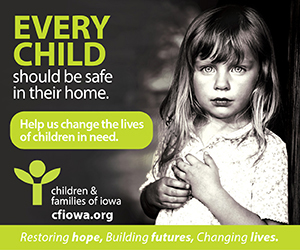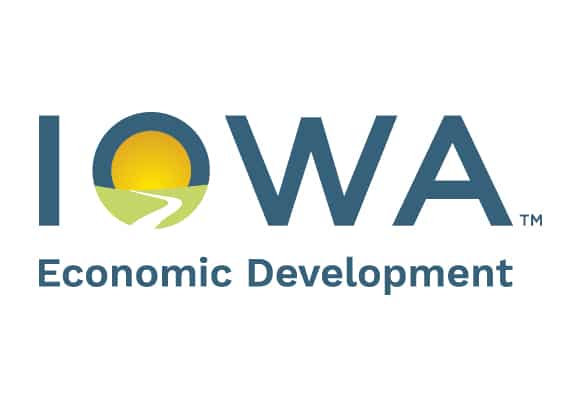Some takeaways from the Economic Forecast

Our five panelists at last Thursday’s Economic Forecast at the Sheraton West Des Moines had a lively discussion about a number of topics that are at the top of everyone’s minds as we head into 2022. If you weren’t able to join the live event, here are some takeaways to consider. Moderated by our group publisher, Chris Conetzkey, the forum included:
- Steve DeVenney, branch manager and SVP of investments, Raymond James & Associates.
- Debi Durham, director of the Iowa Economic Development Authority and the Iowa Finance Authority.
- Brenda Martin, workforce project manager, Center for Industrial Research and Service.
- Peter Orazem, professor of economics, Iowa State University.
- Mike Wolf, global economist, Deloitte Touche Tohmatsu Ltd.
Workforce should be top priority
“The most important thing for our companies to focus on right now is retaining and finding employees,” Brenda Martin said. “You don’t want to lose who you have — you’ve invested a lot to get them to this point, so acknowledge that you have hired all the easy-to-find people. We know that there were less than 300 available people — before COVID — in every Iowa county. That makes it difficult if you’re a growing company.” Companies should invest in removing barriers for those groups that may not be currently employed or who are underemployed, as well as reaching out to K-12 schools to encourage students to think about careers, she said. .
Bankruptcies and foreclosures could surge
Peter Orazem said he’s worried that the “chickens are going to come home to roost” in the next year or two as bankruptcies and foreclosures that were staved off by government-imposed forbearance and stimulus payments end, resulting in potentially massive surges. In 2020, per-capita income increased at some of the fastest levels recorded, while bankruptcy filings were down 30%. If a big rebound in foreclosures and bankruptcy filings occur, it would result in a lot of real estate assets coming up for sale, potentially depressing the real estate markets. “Possibly, it could be good news, if it could all be sustainable, but my sense is that a large departure from past bankruptcy rates is going to be sustained in the future,” he said.
Residential housing will be first to feel credit tightening
The residential housing market is typically the first segment of the economy to reflect a tightening monetary policy, said Mike Wolf, who anticipates the Fed will begin raising interest rates in March, likely by 25 basis points to start, followed by subsequent 25-point increases in each quarter following. “It responds quite quickly — people’s demand for housing is based on interest rates. So the first thing you see is a pullback from housing demand, and that will probably ease some of the house price pressures that we’ve seen recently.
Capital investments up; manufacturers diversifying supply chain
Debi Durham said that from a manufacturing standpoint, the IEDA is busier than ever with its High Quality Jobs portfolio based on “huge capital investments being made by our existing companies,” many with an emphasis on digitizing factory floors. “The second thing we’re seeing is the shoring up of supply chains,” she said. So companies [American and foreign] are saying, we need to be closer to our customers here, so we need a location here. The other thing we’re seeing, which is extremely encouraging, is that large [original equipment manufacturers] like John Deere and Collins are now working with Iowa’s smaller manufacturers, saying, ‘What would it take for you to diversify and to [produce] this product to shore up the supply chain?’ So for that part of our economy, I think it’s going to be stronger than ever.”
Manufacturing employment rebounds
Iowa’s December employment numbers released earlier this week showed that aggregate employment in manufacturing is back to pre-pandemic levels equivalent to December 2019, Orazem noted. “So we’ve made back all of those losses. But within that there’s a lot of variation in terms of how the different sectors are doing. So we’re up 4.7% in employment in non-durable-goods manufacturing, and that’s largely food and food security. And those are relatively shorter supply chains relative to durable goods manufacturing, where we’re still down about 3 to 4%, in terms of employment.” However, Iowa’s labor force has been unable to respond as quickly as many other states due to its aging demographic, which is a concern going forward, he said.
Remote work’s double-edged sword
Anecdotally, CIRAS is hearing that Iowa companies needing to fill middle-management positions are hiring out-of-state people to work for them remotely because they can’t find the talent here, CIRAS’ Martin said. “COVID taught us that people don’t necessarily have to be here to work for our companies, and that is happening today,” she said. “The flip side is that we’re losing talent that might live here. They’re giving their talent to California companies that pay extraordinary wages. We had a company tell us right before Christmas they hired a programmer who was a top wage for Des Moines — over $100,000. He came in the next week and resigned because some company in California offered him $200,000. So it’s happening, and be aware, Iowa is global in that way.
Wolf drops the K(ansas) bomb on flat-tax proposal
On the subject of the flat tax proposal floated by Gov. Kim Reynolds and now the Iowa GOP, Deloitte economist Mike Wolf cautioned that reducing the corporate income tax rate may be an ineffective growth incentive. “It’s very popular, but I think the lesson learned from Kansas under [Gov. Sam] Brownback when they reduced their corporate income tax hoping that this would spur a whole bunch of investment, which didn’t happen and they had to reverse their tax rates. I think in theory, we hope these reductions in taxes will spur economic growth, but in practice … I would be more cautious about it.”
In response, Durham said the reason that Kansas’ corporate tax cut blew up was that the state didn’t put triggers in place to regulate it, and that Kansas didn’t have the kind of budget reserves that Iowa has. The state’s larger focus will be on personal, not corporate, tax, she said. “I like that we’re focusing on personal income tax, because to me, that’s where wealth is created,” Durham said. “The corporate tax is on a much slower trajectory of [proposed] lowering, but we still have to [do that].”
Investment returns will be ‘much more moderate’
From an investment standpoint, Steve DeVenney sees reasons to be concerned about a market correction coming. “In the last three years — 2019, 2020 and 2021 — the stock market as measured by the S&P 500 has doubled in price. It hasn’t done that since 1997, 1998, 1999. And if you were around then, the next two years the S&P lost 40%. So there is excess out there. The correction we’re seeing right now, the Nasdaq closed down 20% a couple of days ago. It could get worse before it gets better. It’s just all the uncertainty about the workforce … And this week energy prices hit $90 a barrel, an eight-year high. … So it’s probably going to be a period of fits and starts. But I don’t think any of us should expect returns like we’ve seen in the last 10 years. It will be much more moderate.”
Watch the entire event here
See the photo gallery here










